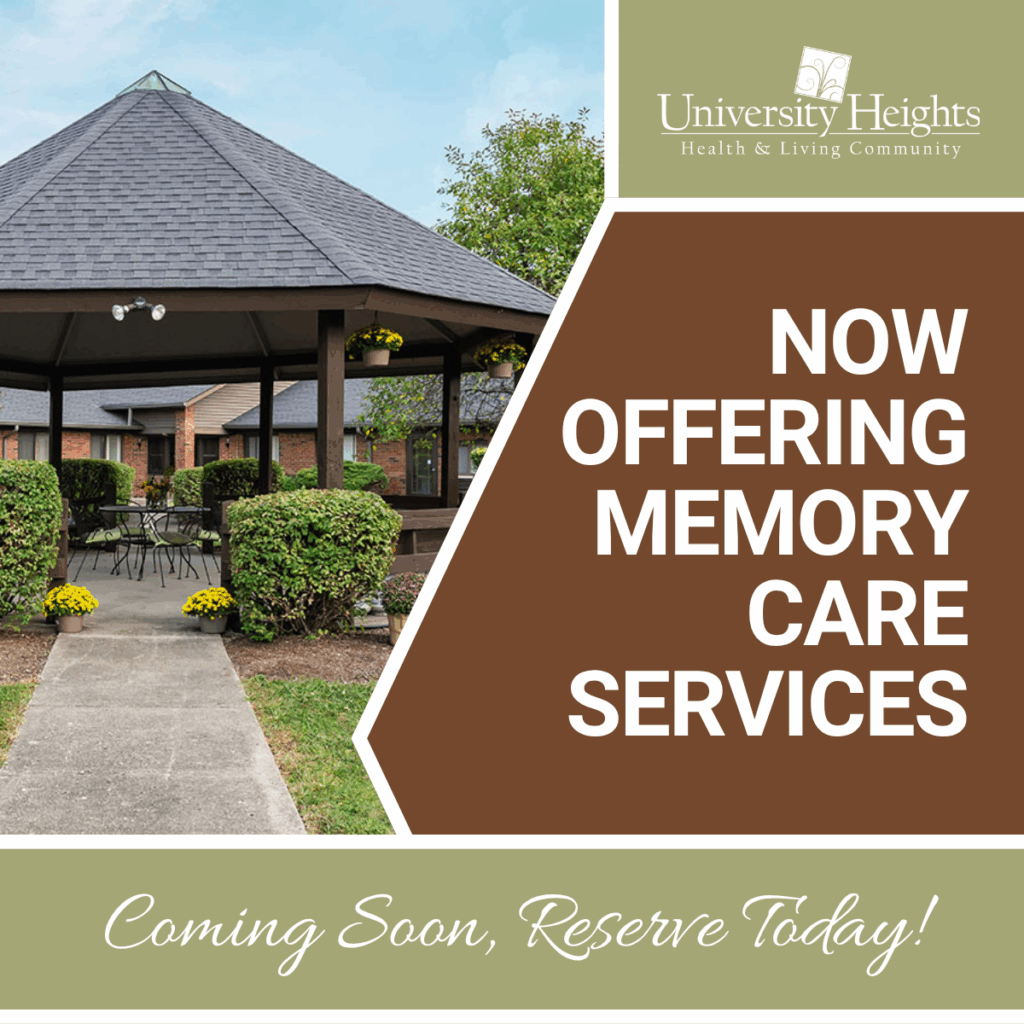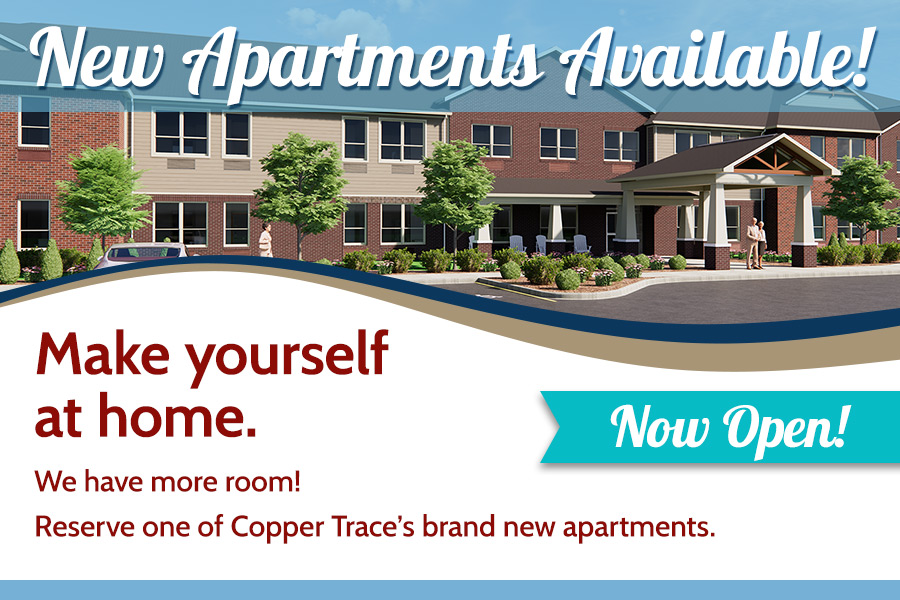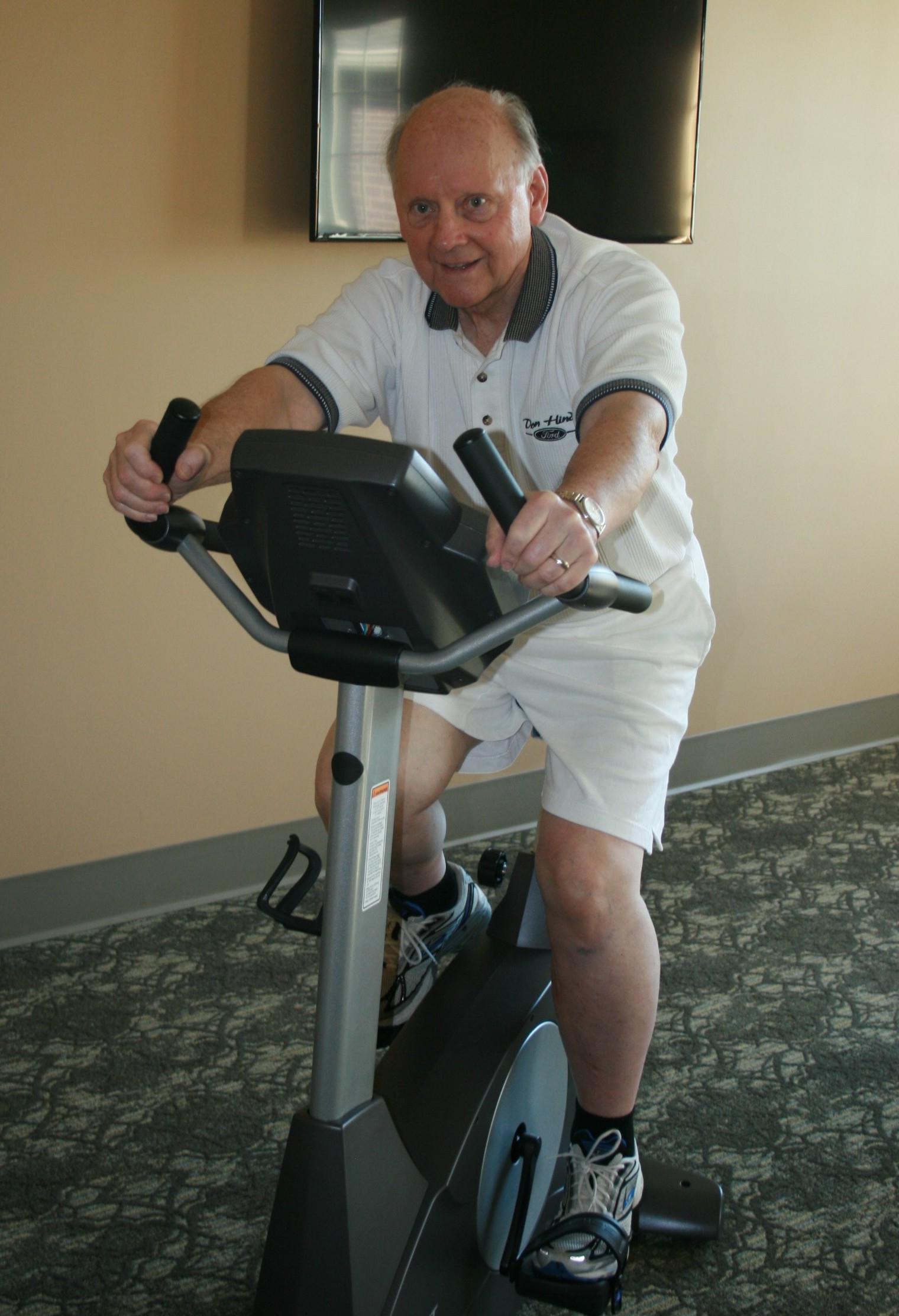
“My wife says one of my great abilities is to forget.” Steve Baranyk chuckled as he talked about wife Susie, married 54 years this July. What’s the key to a long-lasting marriage?
“There’s no magic formula,” Steve said. “Don’t let small disappointments interfere with the bigger picture. Every marriage has its challenges, but don’t let those get in the way. You get to a point in your life where you don’t have a life without the other person.”
Susie and her well-being played a large role in why Steve decided to go to CarDon & Associates’ Copper Trace senior living community in Westfield, Ind., for rehab after surgery to correct a major arterial problem in 2016.
“I suffered an occluded aneurysm behind my left knee, which basically cut off the blood flow below my knee in my left leg. I ended up having emergency arterial bypass surgery on my left leg, which resulted in four incisions and 55 staples holding everything together.”
After the operation, the hospital told Steve he would be going home in a few days. He wasn’t too sure about that.
“I couldn’t walk very well, we live in a two-story home, and the bedroom is upstairs,” he said. “They were changing my bandages every day, and my leg was a mess. But Susie was my main concern. God bless her, she’s a wonderful woman. But she’s not a nurse, and there was no way she was going to effectively change those bandages every day, help me navigate the stairs and deal with my rehab. That wasn’t fair to her. I decided going home that soon wouldn’t work.”
He decided to go to Copper Trace for short-term rehab because he had an intimate knowledge of CarDon & Associates that had been established decades ago.

“Stephen and three of his siblings had taken over the company, so I re-engaged with them at that point and have been involved with CarDon ever since. I have great respect for them. They have always had respect for each other and the determination to build on the success of their parents. They have dramatically grown the business since acquiring it from their parents and continue to provide compassionate care to all those who are admitted to one of their facilities.”
As an advisor to CarDon’s owners, Baranyk had a unique viewpoint when he stepped into Copper Trace as a resident of the community’s short-term rehabilitation program.
“From the business side, I knew if you spent three consecutive nights in a hospital for the same reason, you are entitled to therapy in a facility paid for by Medicare. If medically approved, you’re entitled to 20 full days of in-patient rehabilitation at a facility.”
Steve mentioned it to the hospital’s care planner and said he wanted to go to a rehab facility, particularly Copper Trace. Baranyk took it upon himself to contact the Clinical Nurse Manager at Copper Trace and explain his situation.
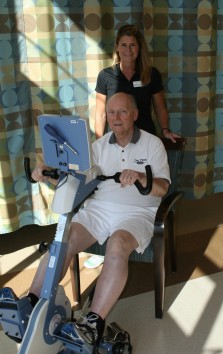
Nurses were there to change his bandages and administer needed medications. After a few days at Copper Trace, Steve developed an infection in his left leg.
“There was a doctor there to check on me and noticed it immediately,” he said. “Had I been at home, we might not have noticed the infection right away, and my recovery would likely have been more difficult.”
Every day for two weeks, Steve worked on the stationary bike twice a day. He had to learn how to walk properly again with the rehab exercises and continued walking as much as possible inside the facility. Once he went home, Steve returned to Copper Trace for another month for outpatient rehab therapy.
“My experience with Copper Trace was unbelievably wonderful,” he said. “All the people there — the nurses, the nurses’ aides, the therapists, the dieticians — they were all so friendly and nice and considerate. It’s very comforting to be there. You have your private room and bathroom, and you can eat with other residents and get to know each other. The whole community aspect is a big part of rehabilitation.”
Forgetting his professional relationship with CarDon — his respect has only grown more for the company after being a resident.
“I didn’t get any special treatment,” he laughed. “It’s how they treat everyone.”
And dear Susie didn’t have to worry about taking care of Steve. She knew he was being taken care of.
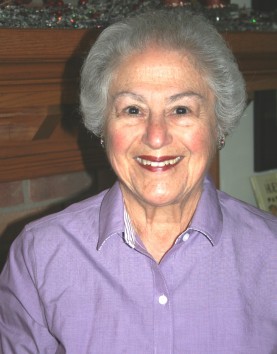
Self-advocacy and taking the initiative to find out his healthcare rights with Medicare gave Steve the option to go to Copper Trace, an option he wishes more people had.
“You have to be your own advocate,” he said. “You or someone close to you has to be an advocate on your behalf to see to it you’re able to obtain these services. Without that, you might end up going home without the opportunity to fully recover and rehabilitate.”
Baranyk takes great pride in knowing the CarDon family and being connected to their compassionate family-centered approach to care.
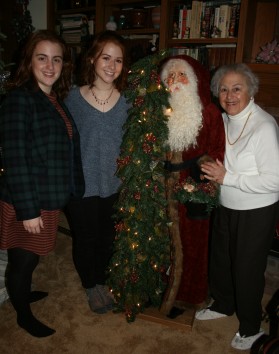
Now he’s grateful to be back at home — spending time with Susie, being “a real aggravation to my kids,” and cherishing the blessings of his life.
“You should look at what you have, not what you think you don’t have.”

